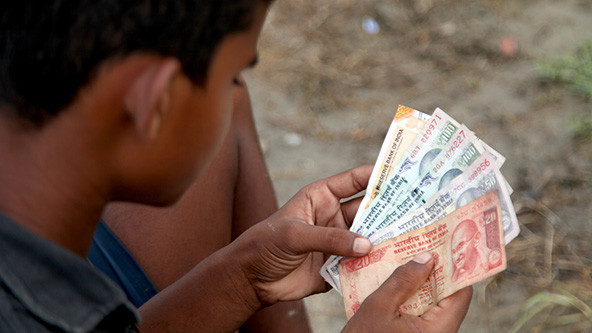 (Photo by iStock/pixelfusion3d)
(Photo by iStock/pixelfusion3d)
In 2016, a group of business and social-impact scholars based at INSEAD in Singapore partnered to explore their shared interest in microfinance. The group watched with concern after India’s reserve bank abruptly scrapped the legal status of all 500- and 1,000-rupee currency notes in circulation. Designed as an anti-corruption measure, this demonetization set off a liquidity crisis with significant consequences for microfinance, a largely rural, cash-based business. Borrowers who would normally pay back loans from microfinance institutions suddenly did not have the ready means to do so.
Analyzing the policy’s disruptions to the microfinance industry, the group at INSEAD collected data and drew on field research to understand the policy’s implications. In a new paper, Arzi Adbi, now a professor of strategy and policy at the National University of Singapore Business School; Matthew Lee, a professor of public policy and management at Harvard University’s Kennedy School of Government; and Jasjit Singh, a professor of strategy and sustainable development at INSEAD in Singapore, dissect the consequences of India’s 2016 demonetization for repayment rates and defaults. They find that community relationships played a significant role in magnifying the crisis.
Collaborating with a large microlender in India that supplied data from some two million individual borrowers, the researchers were able to study patterns of repayment and nonrepayment before and after demonetization went into effect. India’s policy proved disastrous for the microfinance industry. For example, in the month before demonetization, missed payments at one organization hovered under 2 percent, a figure that was typical at the time. In the months following the announcement of demonetization, however, missed payments skyrocketed above 40 percent.
Exacerbating the crisis was a delay in the replacement of banknotes, the researchers found. The government instructed Indians to take their existing notes to a registered bank, which was to exchange them for freshly printed notes. But the government was slow in distributing new notes to banks across the country, leaving Indians who relied on cash without recourse. Since new currency notes were limited, banks capped how much money could be exchanged. Rather than a onetime shock to the system, the researchers’ data shows that the crisis was extensive, lasting several months.
Microcredit was popularized by Muhammad Yunus, the founder of Grameen Bank in Bangladesh, who was awarded the Nobel Peace Prize for his work. His crucial insight was that social relationships and social pressures between borrowers make microlending work. For the rural poor in developing countries who lack collateral or credit history, Yunus saw that “social collateral” could provide a similar mechanism. If everyone in one village or group assumes responsibility for one another’s loans, then higher repayment rates follow, since people do not want to disappoint neighbors or cause financial distress.
“In normal times, these relationships and the pressures they create for repayment help the market work,” Matthew Lee says. “But what happens when an event causes a large number of people to stop repaying? Can social pressure work in the opposite direction?”
Lee and his colleagues found evidence consistent with this idea, and the effects were even more pronounced when borrowers shared the same religion. It was precisely the close relationships that microlenders intend to foster when designing microfinance systems that undermined repayments in 2016, increasing defaults and sending the microfinance industry into a tailspin.
“A central idea in the use of community-based solutions to socioeconomic problems is that these solutions are effective because they are embedded in prevailing social relationships and norms, which enable and enforce cooperation,” says Aseem Kaul, a professor of strategic management and entrepreneurship at the University of Minnesota’s Carlson School of Management. “This paper highlights that these very relationships may also be a source of fragility, accelerating the breakdown of norms and causing individual failures to cascade across the community.”
Social capital is regarded as a critical resource for the social sector because so many effective social interventions rely on it. “Social capital is an incredibly powerful force that can be harnessed for good,” Lee says. “But we have found a potential negative consequence of social capital. We should also think about how it might run counter to our goals.”
Find the full study: “Community Influence on Microfinance Loan Defaults Under Crisis Conditions: Evidence from Indian Demonetization” by Arzi Adbi, Matthew Lee, and Jasjit Singh, Strategic Management Journal, forthcoming.
Support SSIR’s coverage of cross-sector solutions to global challenges.
Help us further the reach of innovative ideas. Donate today.
Read more stories by Daniela Blei.

